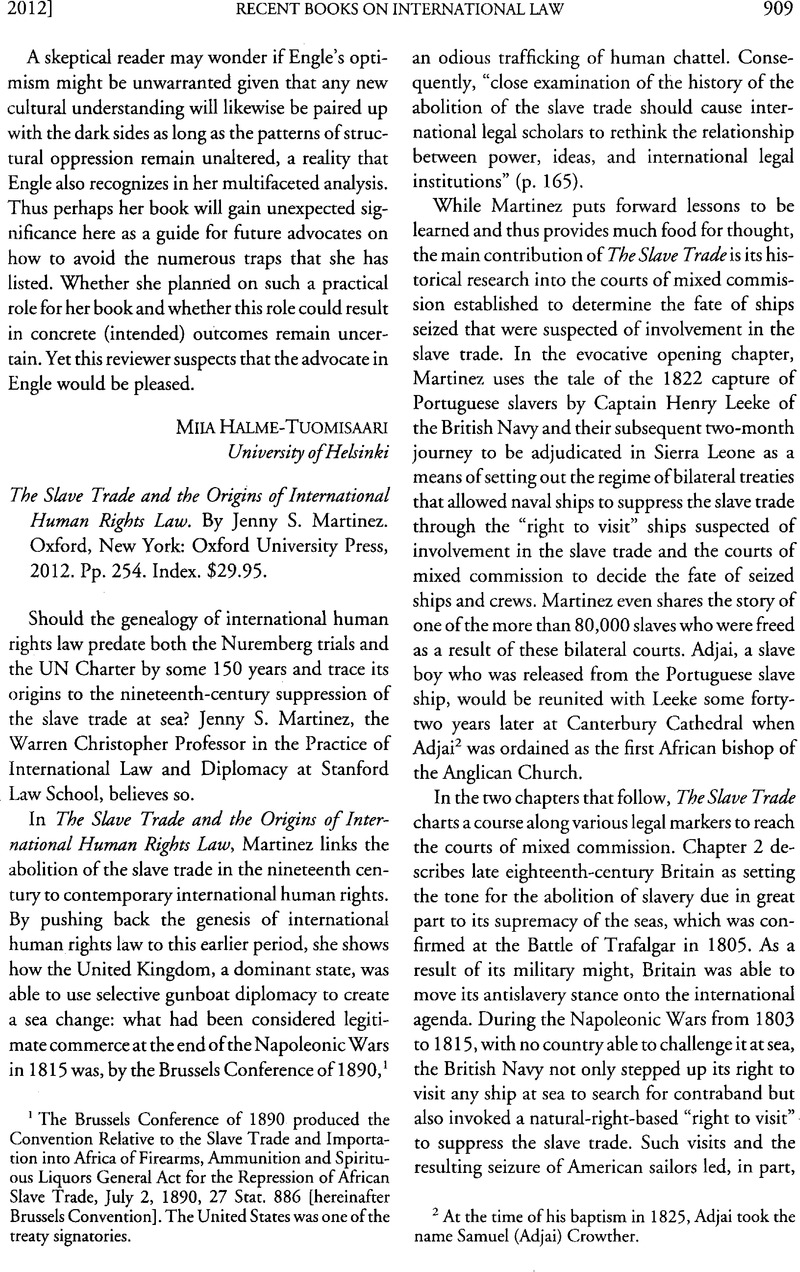No CrossRef data available.
Published online by Cambridge University Press: 20 January 2017

1 The Brussels Conference of 1890 produced the Convention Relative to the Slave Trade and Importation into Africa of Firearms, Ammunition and Spirituous Liquors General Act for the Repression of African Slave Trade, July 2, 1890, 27 Stat. 886 [hereinafter Brussels Convention]. The United States was one of the treaty signatories.
2 At the time of his baptism in 1825, Adjai took the name Samuel (Adjai) Crowther.
3 Treaty of Peace and Amity, U.S.-UK, Dec. 24, 1814, 8 Stat. 218 [hereinafter Treaty of Ghent].
4 Article 10 of the Treaty of Ghent provides in full: “Whereas the Traffic in Slaves is irreconcilable with the principles of humanity and Justice, and whereas both His Majesty and the United States are desirous of continuing their efforts to promote its entire abolition, it is hereby agreed that both the contracting parties shall use their best endeavours to accomplish so desirable an object.”
5 Quoting 7 John Quincy Adams, The Writings of John Quincy Adams 501-02 (Wonhington Chancey Ford ed., 1917) (statement of Adams to Viscount Stratford Canning).
6 Filártiga v. Peña-Irala, 630 F.2d 876, 890 (2d Cir. 1980).
7 Brussels Convention, supra note 1.
8 Id, Arts. XXI, XXIII, XXXI.
9 Muscat Dhows Case (Fr. v. Gr. Brit.), Hague Ct. Rep. (Scott) 93 (Perm. Ct. Arb. 1905); see also Allain, Jean, Nineteenth Century Law of the Sea and the British Abolition of the Slave Trade, 2008 Brit. Y.B. Int’l L. 342 Google Scholar.
10 Convention to Suppress the Slave Trade and Slavery, Sept. 25, 1926, 212 UNTS 17; Supplementary Convention on the Abolition of Slavery, the Slave Trade, and Institutions and Practices Similar to Slavery, Apr. 30, 1956, 266 UNTS 3.
11 Régime of the High Seas, para. 76, in [1951] 1 Y.B. Int’l L. Comm’n 346, 350, UN Doc. A/CN.4/SR.123, available at http://untreaty.un.org/ilc/documentation/english/a_cn4_sr123.pdf.
12 United Nations Convention on the Law of the Sea, opened for signature ‘Dec. 10, 1982, Ans. 105, 110, 1833 UNTS 396; see also Jean Allain, Slavery in International Law: of Human Exploitation and Trafficking 98-104 (2012).